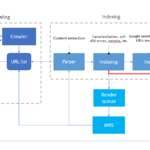Beyond the Mirror: Understanding Body Fat for Better Health
By Smita Bhatnagar
#fittrcoach #fitat46
Just a day ago, someone sparked a conversation, asking, “What is the ideal body fat percentage for women and men? What constitutes a healthy range, and how can one achieve those well-defined abs?” This thought inspired me to share some valuable insights with the community. So, here it goes…
Understanding body fat goes beyond appearances; it’s a key player in our overall health and wellness. Body fat influences hormonal balance, energy levels, and reproductive health. Whether you’re pursuing a healthier lifestyle or chasing aesthetic goals, knowing your ideal body fat percentage can guide your journey more effectively.
For Women:
Essential Fat: 10% to 13% (Key for reproductive health)
Healthy Range: 20% to 30% (Protects organs and supports overall function)
Athletic Range: 15% to 20% (For optimal performance)
Abs Definition: 10% to 20% (Let those abs shine!)
Overweight: 32% to 39%
Obese: 40% and above
For Men:
Essential Fat: 2% to 5% (Vital for organ protection)
Healthy Range: 10% to 20% (Supports good health)
Athletic Range: 6% to 13% (Enhances muscle definition)
Abs Definition: 6% to 9% (For chiselled abs!)
Overweight: 21% to 24%
Obese: 25% and above
These ranges might differ slightly across various sources, but they offer a useful guideline for understanding healthy body fat percentages.
Why Is It Important?
Maintaining healthy body fat levels is essential for hormonal balance. For women, having enough body fat supports estrogen production, which is vital for reproductive health, bone density, and emotional well-being. Women with body fat levels below 22% may face irregular menstrual cycles due to decreased estrogen levels. Moreover, insufficient body fat increases the risk of osteoporosis, with studies showing a 30% rise in fracture risk due to low estrogen levels.
For men, optimal testosterone levels boost muscle growth, energy, and mood. When body fat exceeds 20%, testosterone levels can significantly drop, leading to increased fatigue and decreased libido.
Nutrition and Fitness to Support Fat Loss
To reach your desired body fat percentage, nutrition is essential. Incorporate balanced macronutrients, including lean proteins, healthy fats, and complex carbohydrates, to maintain your metabolism and preserve muscle mass. Avoid processed foods and monitor your portion sizes. Stay hydrated by drinking 3-4 litres of water daily to aid digestion and nutrient absorption.
For effective fat loss, combine strength training with cardiovascular exercises like HIIT and moderate-intensity workouts. Engage in daily physical activities—like walking or taking the stairs—to stay active throughout the day. Prioritize recovery by including rest days, getting adequate sleep, and practising relaxation techniques to support muscle recovery and prevent burnout.
My Personal Experience
During my own fitness journey, I reduced my body fat from 26.4% to an impressive 12.94% in just 12 weeks. This transformation wasn’t just about achieving a leaner look; it was about finding the balance that made me feel empowered, energized, and healthy, without compromising my body’s optimal functioning. With professional guidance, I maintained meticulous control over my nutrition and fitness routine, ensuring my health remained intact throughout the process.
Final Thoughts
Understanding your body, nurturing your health, and finding balance are crucial to your fitness journey. Remember, it’s not just about the numbers—it’s about feeling empowered and strong in your own skin!
#BodyFat #HealthJourney #Transformation #Wellness
#Empowerment #StayStrongWithSmita
Smita Bhatnagar is a passionate fitness writer who focuses on inspiring transformation stories and guiding individuals toward their health goals.









